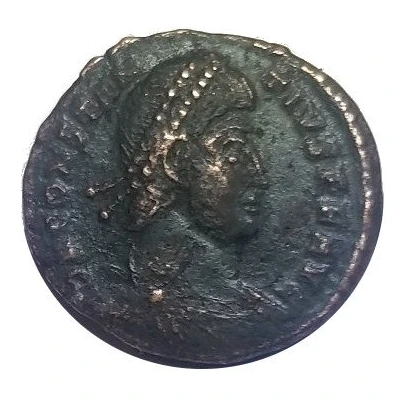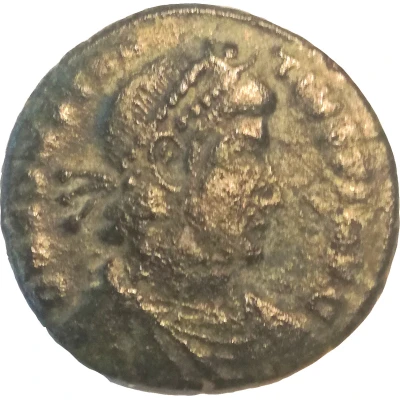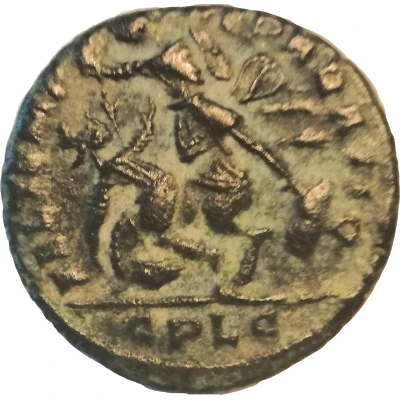


© ctucker (CC BY)
Nummus - Constantius II FEL TEMP REPARATIO with D; Arelate
| Bronze | 2.48 g | 18.5 mm |
| Issuer | Rome › Roman Empire (27 BC - 395 AD) |
|---|---|
| Emperor | Constantius II (337-361) |
| Type | Standard circulation coin |
| Years | 353-355 |
| Value | Follis (1⁄180) |
| Currency | Solidus, Reform of Constantine (AD 310/324 – 395) |
| Composition | Bronze |
| Weight | 2.48 g |
| Diameter | 18.5 mm |
| Shape | Round (irregular) |
| Technique | Hammered |
| Orientation | Medal alignment ↑↑ |
| Demonetized | Yes |
| Updated | 2024-10-04 |
| Numista | N#135977 |
|---|---|
| Rarity index | 70% |
Reverse
Soldier, helmeted, draped, cuirassed, advancing left, spearing fallen horseman with right hand and wearing shield on left arm; shield on ground to right; horseman wearing a pointed cap, turning to face soldier, extending right arm.
Letter in left field.
Officina and mintmark in exergue.
Script: Latin
Lettering:
FEL TEMP - REPARATIO
D
Unabridged legend: Felicitas Temporum Reparatio.
Translation: The restoration of happy times.
Comment
(fr)La ville impériale d'Arles fut brièvement renommé Constantia par l'Empereur Constance II suite à sa victoire sur l'usurpateur Magnence.
Cette variante se différencie des précédents types par la lettre D présente dans le champs et par la césure du revers :
FEL TEMP - REPARATIO
Interesting fact
The Nummus - Constantius II (FEL TEMP REPARATIO with D; Arelate) coin was part of a large-scale currency reform implemented by Constantius II in 353-355 AD, which aimed to address the inflation and currency devaluation issues that had plagued the Roman Empire for decades. This coin, made of bronze and weighing 2.48g, was one of the new denominations introduced during this reform, and it featured a unique combination of symbols and inscriptions that reflected the political and religious ideologies of the time. Despite its small size and relatively low value, the Nummus - Constantius II (FEL TEMP REPARATIO with D; Arelate) coin is a valuable piece of history that provides insight into the economic, social, and political climate of the Roman Empire during the 4th century AD.



